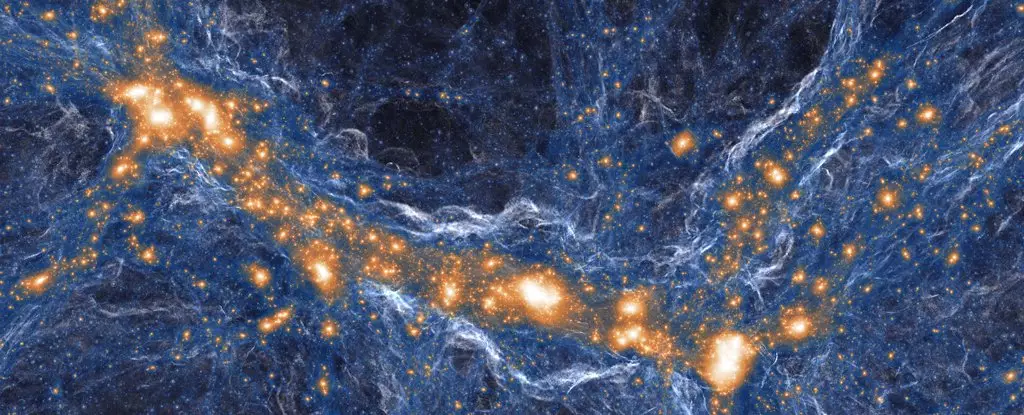In the vast expanse of the universe, the concept of dark matter occupies a pivotal position in contemporary astrophysics. Its designation as “dark” doesn’t stem from an eerie or elusive essence; rather, it derives from its peculiar inability to interact with light. Unlike conventional matter, which responds to electromagnetic waves, dark matter is thought to be neutral and non-electrically charged, making it impervious to light’s influence. This crucial distinction leads to our inability to directly observe dark matter, presenting challenges for scientists seeking to penetrate the cosmic veil.
Conventional matter interacts with light in several ways: it can absorb, emit, or scatter light, thereby revealing its presence to observers. In contrast, dark matter remains elusive, merely allowing light to pass through it without interaction. The cosmic ballet unfolds primarily through the gravitational force, the only discernible connection that dark matter shares with light and regular matter. Consequently, the study of dark matter has relied heavily on its gravitational effects, particularly in phenomena like gravitational lensing, where the bending of light around massive objects reveals an indirect presence of dark matter.
The gravitational influence of dark matter serves as a major architect of the universe’s structure. Massive concentrations of dark matter can trigger the formation of galaxy clusters, which in turn affect the distribution of regular matter across vast cosmic scales. Our understanding of the universe’s architecture is intertwined with the monitoring of how dark matter’s gravitational pull influences regular matter, often leading to the assembly of galaxies and even larger cosmic structures, such as superclusters.
Despite extensive studies, a crucial question lingers: do dark and regular matter merely interact through gravity? The prevailing models suggest a one-dimensional relationship, but there is a fascinating proposition: what if these two forms of matter possess more complexity in their interactions than previously thought? The concept prompts a reevaluation of existing theories about the fundamental nature of dark matter and its role in the cosmic landscape.
Recent explorations into ultrafaint dwarf galaxies (UFDs)—tiny satellite galaxies with significantly fewer stars than anticipated—have ushered in new possibilities. These galaxies, predominantly composed of dark matter, present a unique opportunity to investigate the interplay between dark and regular matter. Given their peculiar star distributions, researchers initiated a study probing whether these galaxies conform strictly to gravitational interaction models or hint at a more intricate relationship.
The key experiment involved simulating two contrasting scenarios regarding dark matter interactions: one in which dark and regular matter interact solely through gravity and another where they exhibit additional interactions. Predictions were made regarding the potential distribution of stars in these dwarf galaxies, ultimately leading to two competing models. The gravitational-only model anticipated a denser concentration of stars at the galaxy’s center, while the interacting model suggested a more homogeneous star distribution across the UFDs.
Upon testing these models against observational data from six prominent UFDs, researchers discovered a surprising revelation—the interacting model provided a more accurate fit to the collected observations. This finding introduces a paradigm shift in our understanding of dark matter, suggesting that interactions extend beyond gravity, potentially reshaping our fundamental understanding of cosmic matter.
The implications of these findings extend beyond academia and challenge existing dogmas surrounding dark matter. The acknowledgment of any interaction between dark and regular matter opens doors for innovative techniques aimed at directly detecting dark matter particles, a task long considered elusive.
As the scientific community grapples with these evolving narratives, it becomes increasingly clear that our traditional images of dark matter are perhaps oversimplified. Each step toward unraveling this cosmic enigma brings science closer to demystifying not just dark matter’s nature but also the very fabric of the universe itself. Thus, while dark matter may remain a shadowy presence within our galaxies, it may no longer be as invisible as we once thought. Future research stands on the cusp of a paradigm where understanding dark matter is a gateway to revealing the universe’s hidden narratives and intricate symphony.


Leave a Reply